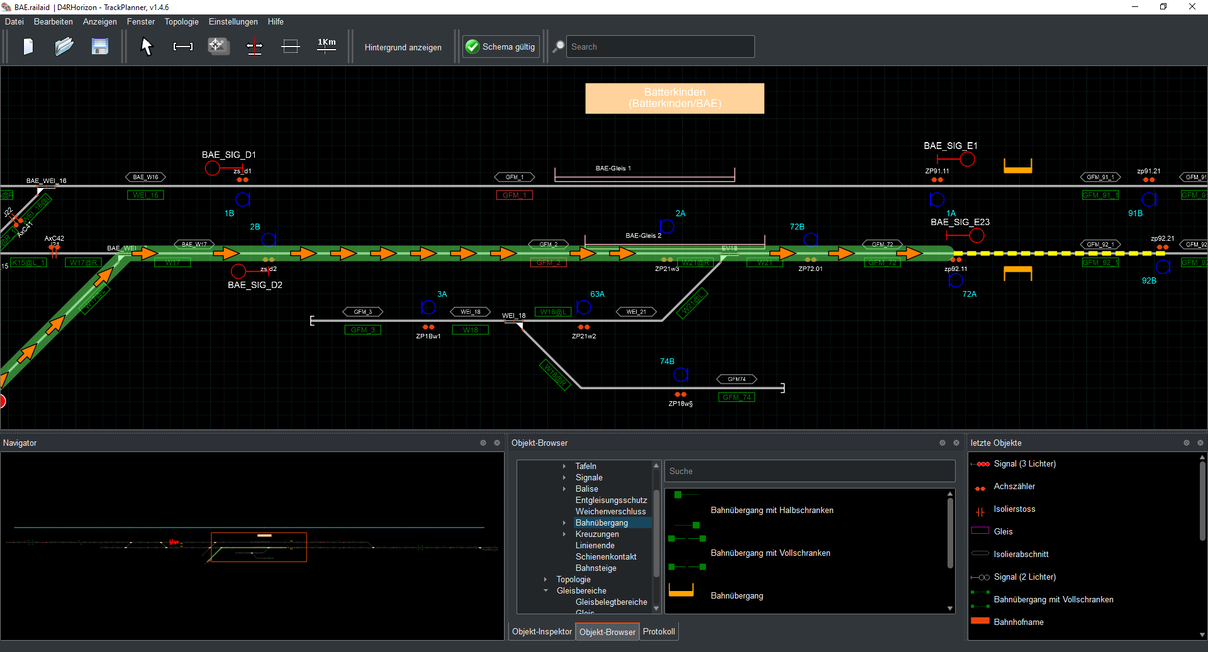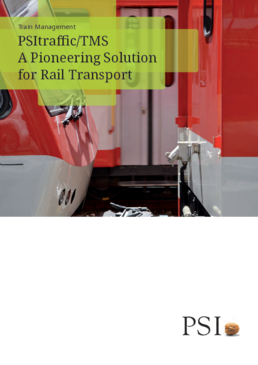Recent progress in rail transport has been characterized by its digitization. This does not mean the mere automation of previously manual and paper-based processes.
The actual task at hand is to fully network the many different areas that were previously independent and are now digitized. The main reason: Their seamless interaction in the sense of a “digital railway” opens up considerably more potential. For example,
- improved punctuality,
- energy- optimized driving or
- an optimal train fleet schedule.
Thorough data collection and collaborative planning across all departments will be required in railway operations, similar to the Building Information Modeling in the construction industry, which takes a comprehensive approach from the outset and not only plans the construction but also the subsequent management of the project components. The railway system is significantly more complex and has more diverse requirements, which makes this project more extensive compared to the building industry, but the goal of creating digital railway atlas is the same:
Cross-connections make the difference
Linking modern interlocking systems and new safety technology makes it possible for carriers to use advanced train control systems (ETCS) that react quickly and efficiently to resource conflicts – to name just one example. They not only detect technical defects or delays, but also analyze their downline effects. Partially autonomous operations in the first ATO (Automatic Train Operation) implementation projects also require digital modeling of the entire infrastructure.
Cross linking and integrating all areas via (as standardized as possible) interfaces will massively improve the quality of the operational process. Close interlocking of workshop planning, vehicle scheduling and error management in the timetable will lead to
- a more efficient utilization of the workshop,
- reduce costs for vehicle provisioning and
- ensures higher vehicle availability for scheduling.
Data drives reliable solutions
Because the system also considers all subsequent trips, connections and workshop orders, station inspectors and dispatchers only have to select the desired solution with a mouse click in the event of a conflict, and that provides considerable relief.
If a carrier plans to build a new interlocking system, create a digital remote driving system, introduce automatic train operation or modernize the train driving system, having only information on the railway network and signal positions is no longer enough.
This also includes data which are often hidden deep in the interlocking system design, e.g., signal overlap sections, flank protection and the resulting incompatibility between routes. In addition, all information from flanking third-party systems must also be included.
An end-to-end system must continuously answer the following questions
- When can an interlocking route be set up without hindering other trains?
- Will the just arriving train leave in time to clear the route for the next train?
- Which bypasses are possible and advisable in the event of conflicts caused by delays?
- Under what conditions will the order of trains be changed if some of the trains arrive late from different lines and now share the same route?
- Where are the hazardous areas that may need to be driven at a slower speed?
- Taking into account track layout geometry such as gradients and curve radii, which acceleration is optimal in order to maintain the arrival time with the least energy consumption?
- Which connections have to be maintained, how much room for maneuvering is there and what transfer times are required?
- When does a stop need to be extended by a few seconds to accommodate a connection in case of a slightly delayed feeder line?
Towards a digital railway
Nevertheless, it is worth working through this phase, especially since a structured approach will invariably avoid surprises down the line. The process typically begins with recording the technical infrastructure on the basis of track diagram documents. The interlocking data (interlocking routes, specified times) are then integrated and checked. As a result, all collected data are available electronically and in consolidated form.

Framework conditions for successful data acquisition
The following framework conditions have proven themselves to be useful for the smooth digitization of a network:
1. Data collection in standard format
Data collection should be based on a common standard format such as railML or EULYNX. Using a mature standard ensures that the data is complete and consistent and in a well-documented format. This ensures reusability for later projects.
2. Data collection via graphical editor
Using a convenient graphical editor makes the data collection less prone to errors. This editor can be used to identify inconsistencies between the various data sources much more reliably and much more quickly. If the editor displays the configured route with signal overlap section and flank protection, the user immediately sees if a significant error has crept in.
3. Customized views
It is necessary to clarify early in the process which data sources will be integrated in the network data collection, which consumers there are for the data, and how the corresponding data models may differ. Data collection for the track network should be as detailed as possible.
An individual track diagram must, for example, generate the following views
Cross linking timetable and interlocking system
Timetable systems often only have a “macroscopic” outline of the network – station tracks and the route options resulting from regular lines. To drive the train, these specifications must be transferred into a detailed track diagram model: If, for example, a train is to be directed from one platform to the next station, the train driving system must assign this specification and it must do this via a sequence of routes that will not run into any conflicts with other trains or route closures.
Integration of train driving and interlocking system
Take special care when designing the train driving system topology. It is often equated with the interlocking system view, but it does not always correspond to that: Track sections are often divided into several parts where more than one train can be located, for example with divided platform tracks or in case of defensive/permissive travel (stop, then proceed on sight). The same applies to holding yards which are still built to the classic design without axle counters or insulating joints.
Integration of wireless position systems
A complete digital railway atlas also includes the data from wireless position systems – including GPS. They work with spatial coordinates which must be mapped onto track sections, e.g. in certain station areas.
Accurate detection of all signaling positions
Systems which in principle work with data of the same depth of detail can still be based on different logics. For example, the interlocking system recognizes sections separated by insulating joints or axle counters and whose boundaries are secured by preceding signals. From the point of view of the interlocking system, if a train crosses a signal, it is already in the next section, although the signal is actually placed a few meters in front of the section boundary. The track layout model must therefore be able to manage “virtual”, consumer-specific positions for some objects in addition to their actual position.
Digital route atlas as the basis of the digital railroad
Due to the rapid technological developments of recent years, all required software solutions as well as standards for reliable and secure data exchange are available today.
Even if the last details have not been cleared yet, a digital railway atlas can already be used to lay the basis for a comprehensive, fully integrated planning approach in the railway sector.

![[Translate to English:] Regionalverkehr Bern-Solothurn: Die Worbla mit der Seconda. Quelle: PSI](/fileadmin/_processed_/1/3/csm_RBS_Worbla_Seconda_e8b4ec42dc.jpg)
